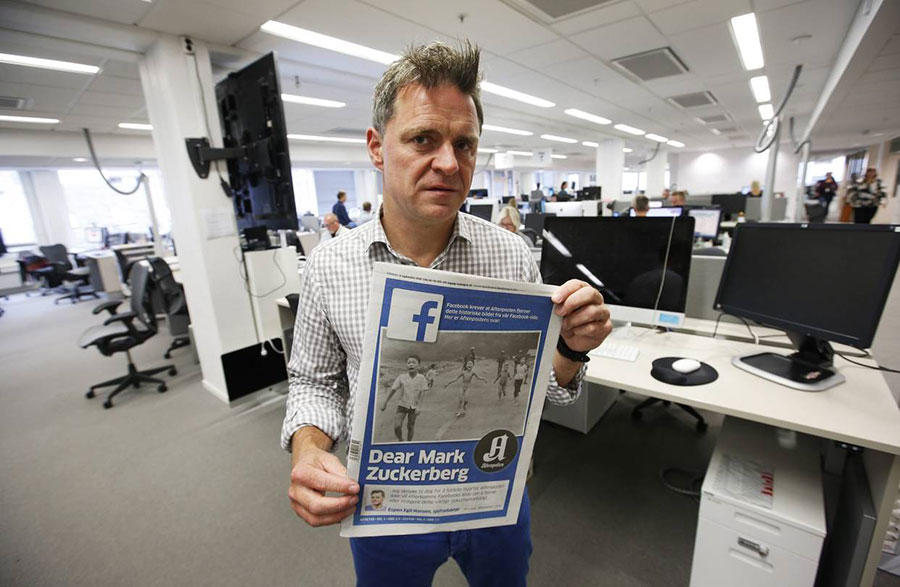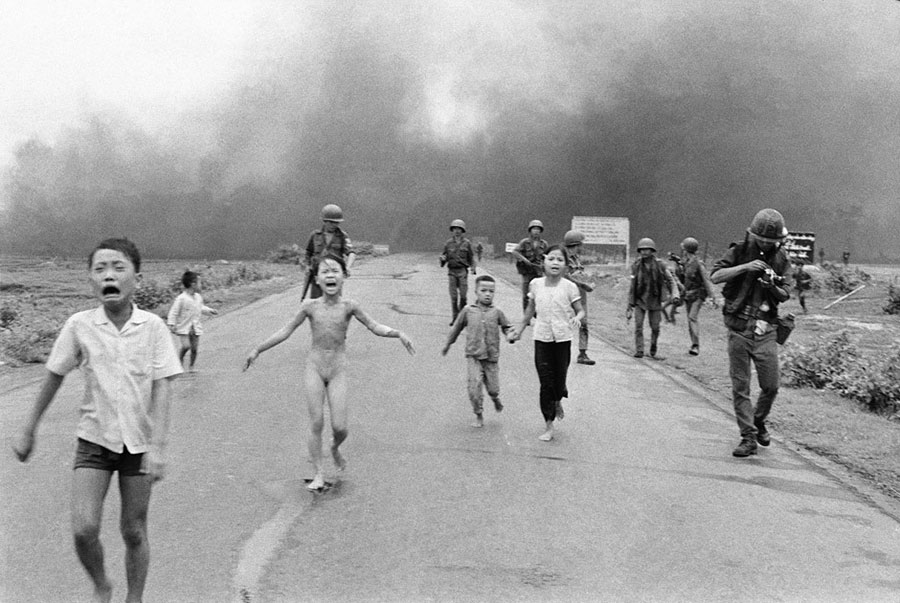Facebook reconsiders banning of “The Terror of War” after Norwegian media criticizes the social media for tagging the picture as nudity without considering the historical context. The image was removed from Facebook after Tom Egeland posted an article on famous war pictures, causing indignation among those in the media world.
After the public outcry, Facebook said it would restore the image and review its system in charged of banning unacceptable content. Norway’s Prime Minister and its newspaper Friday manifested their opinion about Facebook banning the picture and how important it is to improve their policies regarding nudity and what is considered child pornography.

Norwegian daily Aftenposten addressed a letter to Mark Zuckerberg, Facebook Chief Executive, for “limiting freedom” after the platform remove the iconic picture earlier this week for violating the company’s policy against showing nudity. Erna Solberg, Norwegian Prime Minister, posted on her Facebook page the social media it is getting it wrong when they censor such images. She said “no” to this type of censorship. Ms. Solberg post was removed hours later because it included the image.
But later on, Facebook analyzed the situation, and a company spokesperson stated that an image of a naked child would normally be presumed to violate their policies, and in some countries might even qualify as child pornography. The spokesperson continued and said, in this case, Facebook recognize “The Terror of War” history and global importance in documenting a particular moment in time.
After the statement, Facebook said it would adjust its reviewing process on both software and human moderators to allow sharing the iconic picture. The platform warned it would take a few days for it to come into effect. Thus, people need to be patient. Facebook also said it would talk to publishers.
The process behind Facebook review of inappropriate content

Facebook mostly relies on its users to flag content that violates the company’s policies. But that is not all. Those post the are passed to Facebook’s “community operations” team in different offices around the world, where reports are graded to deal with those posts that are a priority, such as terrorist ones.
The famous social media prohibits nudity, terrorism and hate speech on its website, including strict rules around child pornography. Facebook employs a technology called PhotoDNA which scans for images related to child sexual exploitation. PhotoDNA uses a database created by the National Center for Missing and Exploited Children to help reduced the crime on the platform.
But Hany Farid, who helped develop the Photo DNA system said the Vietnam image would never have been included in the child pornography database. Farid said the case of the banned picture is an issue of the judgment of what does and does not violate terms of service, and not of the technology that is used to enforce those terms. Mr. Farid is chair of the computer-science division at Dartmouth College.
The image that caused such outrage is known as “The Terror of War” and was shot by Nick Ut in 1972. It won a Pulitzer Prize, and it features nine-year-old Kim Phuc fleeing naked from napalm bombing during the Vietnam War. She had ripped off her burning clothes.
After deleting his post with the picture, Egeland republished the photo on his Facebook wall. He added links to newspaper articles that show Ms. Phuc support its dissemination, and as it happened to Norwegian Prime Minister, Facebook deleted the post, and it also banned the Norwegian writer from the platform during 24 hours.
Aftenposten stated Mark Zuckerberg is becoming a supreme editor, because even when Facebook is not a media company because it does not create content, the platform is widely used as a mean of sharing news and stories.
Source: The Wall Street Journal
